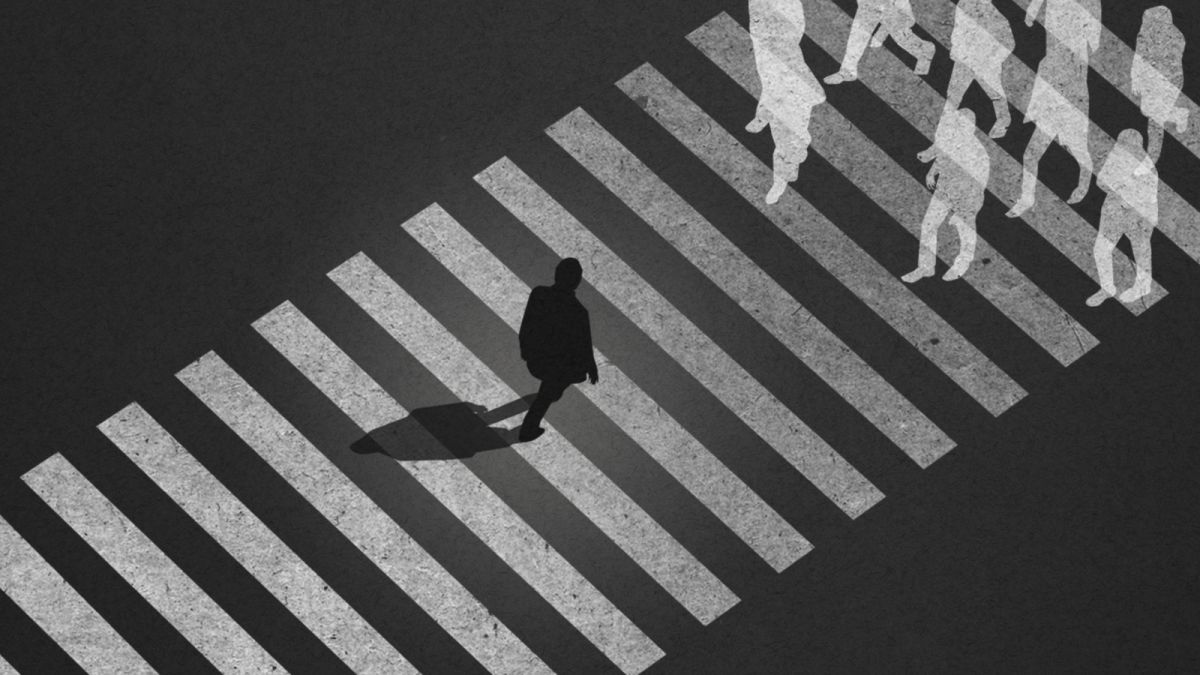
The U.S. criminal legal system has expanded at a rapid pace, even as crime rates have declined since the 1990s. As a result, individuals’ interactions with and surveillance by law enforcement are now commonplace. But citizens experience different interactions, with people of color who live in impoverished urban communities having the most frequent encounters. A new study interviewed young Philadelphia men to determine their perceptions of and reactions to this phenomenon. Nearly all of the men of color said they stayed at home and avoided public spaces out of concern over the potential interactions with others that might draw police attention.
The study, by a researcher at Temple University, appears in Criminology, a publication of the American Society of Criminology.
“This kind of avoidance of being out in the community is a racialized adaptation to the expansion of the criminal legal apparatus and the unpredictable nature of men’s interactions with its agents and enforcers,” explains Jamie J. Fader, associate professor of criminal justice at Temple University, who conducted the study. “It reproduces the effects of incarceration by turning the men’s homes into virtual prisons, and it effectively erases young men of color from the public sphere, with considerable costs for the men and their neighborhoods.”
Fader and her team conducted in-depth interviews with 45 men ages 25 to 34 who live in Frankford, Pennsylvania, an impoverished, racially diverse Philadelphia neighborhood with high rates of crime and violence. The area has also been heavily affected by mass incarceration. The study included 23 men who identified as Black, 5 who identified as Latino, and 17 who identified as White. Twenty-six of the men had at least a high school diploma and 19 had less education.
In her study, carried out from 2014 to 2019, Fader sought to learn how the men perceived risk and how they organized their daily routines in response to it. She also explored whether there are racial differences in perceptions and adaptation to risk.
Interviews lasted several hours and covered a range of topics, including daily routines, perceptions of the neighborhood, contact with police, family and social ties, and identity questions centering on stigma, masculinity, and adulthood. Fader and her team examined official criminal records to secure a history of each man’s contact with the criminal justice system prior to the interview and new contact in the time after the interview. They also drew information about the Frankford community from five years of regularly observing community meetings, events, and venues.
The Frankford men, particularly the men of color, described a preoccupation with trouble, which they often called “drama,” that stemmed from the unpredictable nature of their status vis à vis the criminal legal system, as well as the regular threat posed by street or police violence. Even men who had no prior criminal record or involvement with the criminal justice system expressed concern about venturing out beyond their homes, viewing public spaces as unpredictable and posing an unacceptable level of risk.
This practice of avoiding venturing into their neighborhood often translated into a lack of engagement in their community, whether it be in civic or service organizations or by getting to know neighbors, the study concluded. Fader and her team distinguished those who felt they had no choice but to stay home (identifying them as avoidant) from men who said they had chosen to limit their social contacts because they wanted to avoid social ties (identifying them as isolated). The study also found a systemic lack of men under 40 at community meetings and events in Frankford. The same pattern emerged in observations of barber shops, boxing gyms, and bars.
“Our study features men who came of age during the super-predator scare,” says Fader, referring to the since-debunked idea that some impulsive young men carried out violent crimes without remorse. “The justice system, which is ostensibly designed to reduce risk of crime, has actually heightened men’s concerns about risk. In addition to fears of victimization by street-level gun violence, these men also worry about the potential for arrest, court involvement and a criminal record, incarceration, and death at the hands of police.”
The study has a number of implications, Fader suggests. The vigilance these men need to avoid trouble creates an environment of unrelenting stress, which affects mental and physical health and can reduce life expectancy. The men’s avoidance of others limits their ability to develop and maintain social ties, and prevents the accumulation of social capital. It also forces the men to manage the risks they fear alone, without support from social service agencies. And it limits job opportunities, travel, friendships, and community involvement.
Finally, Fader notes, mistrusting social institutions and avoiding public space reduces community engagement, political participation, organizing, protesting, and capacity building, activities that build stronger social infrastructures and are engines of social and personal change.
Fader pointed to several limitations of the study: Because the study focused on one community and interviewed only men, its findings cannot be generalized to other communities or speak to women’s experiences. Also, because the study relied on the men’s narratives of their activities rather than on direct observation, it is possible that the men characterized themselves as more self-sufficient and independent than they actually were. Finally, about half the White men in the study were in recovery from substance abuse, which may have affected both their assessments of risk and the economic and social support they received from the recovery community.

